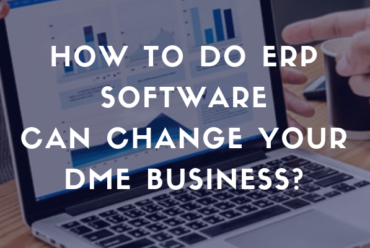Medical devices are a fast-growing segment in the health care industry. The demand for devices is accelerating from two particular areas, emerging foreign markets where the devices are relatively new, and in the U.S. with its aging population.
Medical devices manufacturers face unique challenges when compared to other equipment manufacturers. Not only do they face the product complexity, the demand for more variety by customers, the competitive pressures, and the downward price pressures; they also face the following unique complexities.
What is ERP?
Enterprise Resource Planning software works across many functions of the business.
For example, inventory. Purchasing orders from a vendor are created and sent electronically once products come in they will enter into the ERP so that all products are accounted for in real-time, and with their actual costs and bar, code systems keep the inventory up to date, so that products can be ordered on a just-in-time basis.
Benefits of ERP Software:
- Easy to comply and track all regulation and compliance requirements
- Improve life cycle management
- Complete product and component traceability, serial no., batch/lot, component
- Improved collaboration and relationship with the doctors, medical experts, engineers, and suppliers
- Ability to handle multiple planning models, configurations
- Lower costs and waste thru lean practices
- Flexibility in adapting products to specific customer wishes
- Better control over design changes
- Ease of doing business for the customer
- Insights into accurate product cost with full view and application methods
- Manage high-level receivables
ERP can bring the inventory into each individual delivery truck, enabling the truck drivers to track inventory and always have items on hand. In this way, ERP turns trucks into mobile warehouses, and drivers become responsible for their own inventory.
A second trip to deliver to a patient costs on average of $70. With an ERP system integrated into curbside, proper patient sizing, inoperative equipment, and compliance documents are complete and accurate.
When a customer service representative enters a customer’s information of all the critical elements maintained within the ERP system.
Once a customer profile is set up all the documentation are attached to that customer drastically increasing the efficiency on the billing operation, because the ERP is synced up with the billing and insurance information.
They can also tell customers if they have pending payments due, speeding the payment process.
Once the Patient responsibility is identified and credit card will be placed in a file automatically to collect the money when the claim is adjudicated.
If the patient cannot pay that amount on a single payment then a plan can be established at intake.
The billing team can instantly access billing records, reimbursement rates, and documentation for any individual claim. This allows them to immediately remedy problems before submitting for reimbursement.
The integration of the ERP means that the billing team has a much higher rate of accuracy when submitting claims because the system will tell them when a claim is incomplete, virtually eliminating denials based on incomplete claims.
Are you ready to see how powerful ERP software can benefit your business?


